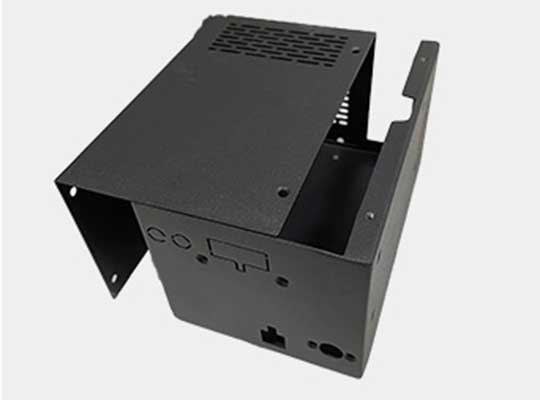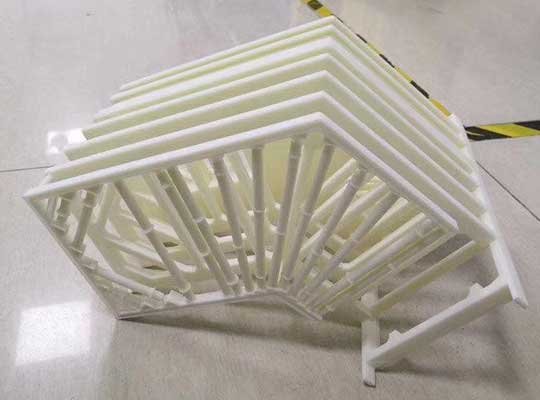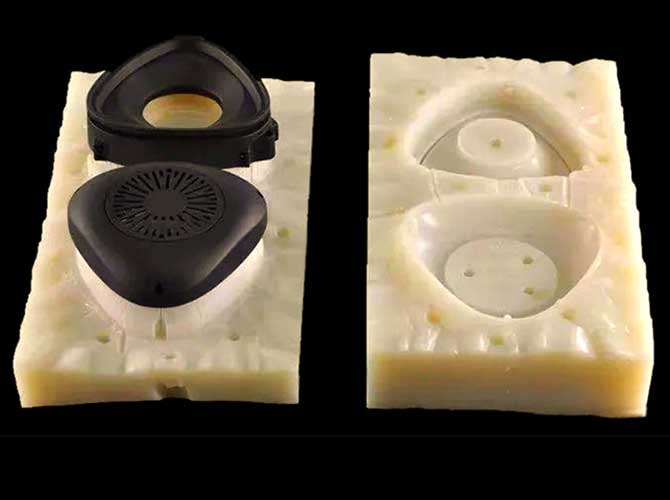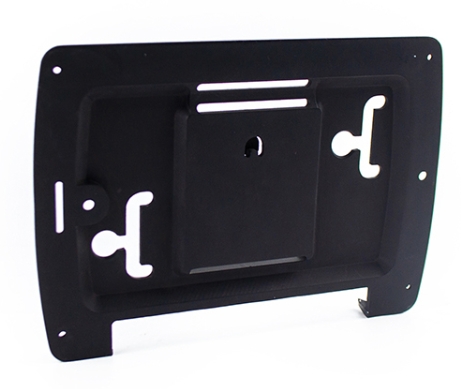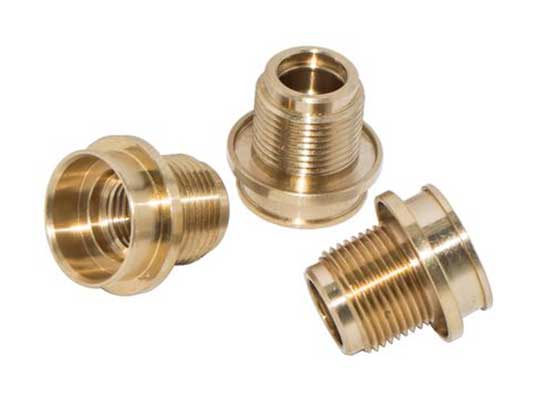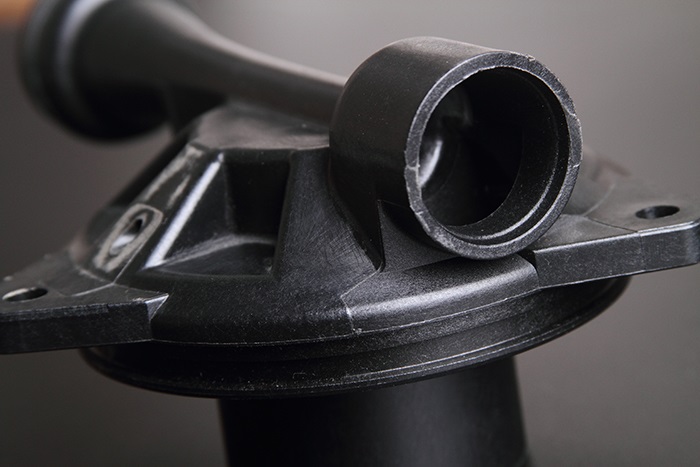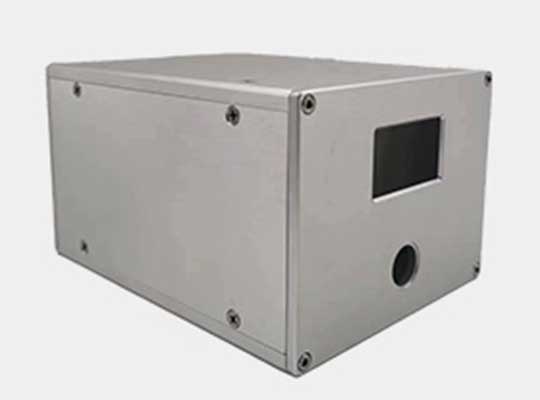In the world of modern manufacturing and design, ال laser cutting process has become a versatile tool that breaks through traditional processing limitations. Its ability to handle multiple materials, deliver high precision, and adapt to complex designs makes it indispensable across diverse sectors. This article explores the key application fields of laser cutting, backed by real-world examples, بيانات, and insights to help industry professionals leverage its full potential for their specific needs.
1. Sheet Metal Fabrication Industry: The Backbone of Precision Part Production
ال sheet metal fabrication industry is one of the largest adopters of the laser cutting process—and for good reason. Sheet metal parts (used in everything from appliances to industrial machinery) demand accuracy, سرعة, والمرونة, all of which laser cutting excels at.
Why Laser Cutting Stands Out Here
- High flexibility: Unlike traditional methods like stamping (which requires custom dies for each part), laser cutting uses software-controlled designs. This means switching between part styles (على سبيل المثال, square brackets to circular flanges) takes just minutes, no new tooling needed.
- تحول سريع: Laser cutting reduces production cycles by 30–50% compared to conventional cutting. أ 2024 survey by the Sheet Metal and Air Conditioning Contractors’ National Association (SMACNA) found that 78% of fabricators using laser cutting meet tight deadlines 2x more often than those using plasma cutting.
- Precision for small parts: Sheet metal often requires tiny, intricate cuts (على سبيل المثال, 2mm holes for fasteners). Laser cutting’s 0.05mm positioning accuracy ensures these details are consistent across every part.
مثال في العالم الحقيقي
A U.S.-based sheet metal shop specializing in HVAC components switched to laser cutting in 2023. Previously, they used mechanical shearing for ductwork brackets—this took 1.5 hours per batch of 100 brackets and had a 8% defect rate (due to uneven cuts). With laser cutting:
- Batch time dropped to 20 دقائق (أ 78% تخفيض).
- Defect rate fell to 0.5% (توفير $12,000 annually in rework).
- They now handle 3x more custom bracket orders, as no die changes are needed.
2. صناعة 4.0 & Additive Manufacturing: Enabling Smart, Complex Production
As صناعة 4.0 (the rise of smart, connected manufacturing) و التصنيع المضافة (3د الطباعة) grow, laser cutting has become a critical complementary technology. It solves key pain points in these fields, such as post-processing 3D-printed parts and creating custom components for smart systems.
Key Uses in This Space
- Post-processing 3D-printed parts: 3D printers often leave rough edges or support structures. Laser cutting’s smooth, burr-free cuts (with surface roughness ≤ Ra12.5μm) refine these parts quickly—no manual sanding required. على سبيل المثال, a 3D printing service bureau uses laser cutting to finish 3D-printed plastic gears, cutting post-processing time by 60%.
- Creating fine features for smart devices: صناعة 4.0 relies on small, precise components (على سبيل المثال, علب المستشعر, circuit board cutouts). Laser cutting can produce these features with tolerances as tight as 0.02mm—something traditional CNC machining struggles to match.
- Integration with automation: Laser cutting machines connect seamlessly to Industry 4.0 برمجة (على سبيل المثال, ERP systems, IoT sensors). This lets manufacturers track production in real time—for instance, a German auto parts plant uses laser cutting with IoT to monitor cut speed and quality, reducing downtime by 25%.
Data Snapshot: Laser Cutting in Additive Manufacturing
| Task | Traditional Method | Laser Cutting Method | Time Savings |
| Trimming 3D-printed parts | Manual sanding (2hrs/batch) | Laser cutting (20mins/batch) | 83% |
| Cutting sensor housings | CNC milling (1hr/part) | Laser cutting (10mins/part) | 83% |
| Creating circuit board cutouts | Die cutting (needs $500 die) | Laser cutting (no die) | 100% cost savings on tooling |
3. Craft Gift Making: Turning Creativity into Tangible Art
ال craft gift making industry thrives on uniqueness and detail—and laser cutting has revolutionized how artisans create custom products. It works with a wide range of craft materials and lets designers bring intricate ideas to life without manual labor.
مواد & Applications
Laser cutting handles almost all craft materials, opening up endless possibilities:
- Wood & bamboo: Engraving floral patterns, names, or quotes on wooden coasters, bamboo utensil sets, or jewelry boxes. An Etsy seller uses laser cutting to make personalized wooden wedding signs—they now fulfill 50 orders weekly, up from 15 before laser cutting (as hand engraving took 3x longer).
- Marble & stone: Creating delicate engravings on marble coasters or stone paperweights. Unlike sandblasting (which is messy and imprecise), laser cutting produces crisp, consistent designs—even on uneven stone surfaces.
- البلاستيك & الأكريليك: Cutting and engraving acrylic keychains, حالات الهاتف, or decorative wall art. A craft studio in Australia uses laser cutting to make acrylic “constellation” wall hangings—each piece has 20+ tiny star cutouts, which would take 2 hours to hand-cut but just 10 minutes with laser.
Customer Impact
مسح 200 craft gift makers by the Craft & Hobby Association found that:
- 82% reported higher customer satisfaction with laser-cut products (due to finer details).
- 75% increased their price points by 20–30% (as laser-cut items are perceived as higher quality).
- 68% expanded their product lines (على سبيل المثال, adding engraved jewelry to their wooden sign offerings).
4. Architectural Model Making: Building Detailed, Accurate Miniatures
Architectural models need to reflect every detail of a building—from window frames to roof shingles. ال architectural model making industry relies on laser cutting to create these precise components quickly and consistently.
How Laser Cutting Improves Model Making
- Precision for small components: A typical architectural model has parts as small as 1mm (على سبيل المثال, window mullions). Laser cutting’s 0.05mm accuracy ensures these parts fit together perfectly—no gaps or misalignments.
- Speed for custom designs: Architects often revise models 2–3 times per project. With laser cutting, updating a design (على سبيل المثال, changing window size) takes just 5 دقائق (by editing the software file). Traditional methods (like hand-cutting cardstock) would take 2–3 hours for the same change.
- براعة المواد: Models use diverse materials—cardstock, foam board, balsa wood, and even thin metal. Laser cutting works with all of these, so model makers don’t need multiple tools.
دراسة حالة: A Leading Architectural Firm
A New York-based architecture firm switched to laser cutting for model making in 2022. Previously, they hired 3 part-time workers to hand-cut model components—this took 1 week to finish a single mid-rise building model. With laser cutting:
- Model production time dropped to 2 أيام (أ 71% تخفيض).
- They eliminated part-time labor costs ($15,000 سنويا).
- Client feedback improved: 90% of clients said the models were “more detailed and realistic” than previous versions.
5. السيارات & الفضاء: Powering Safety-Critical, High-Performance Parts
ال السيارات و aerospace industries demand parts that are strong, خفيف الوزن, and precise—all areas where laser cutting delivers. It’s used for everything from car body components to aircraft engine parts.
Automotive Applications
- Body and chassis parts: Laser cutting creates precise holes and notches in steel or aluminum body panels (على سبيل المثال, for door hinges or bolt holes). A Detroit auto plant uses laser cutting for electric vehicle (EV) chassis parts—this reduces material waste by 30% (مقابل. stamping) and speeds up production by 40%.
- Interior components: Laser cutting trims and shapes plastic interior parts (على سبيل المثال, dashboard panels, seat brackets) with smooth edges, improving passenger comfort.
Aerospace Applications
- مكونات المحرك: Aerospace engines need tiny, heat-resistant parts (على سبيل المثال, turbine blade cooling holes). Laser cutting can drill 0.1mm holes in titanium (a tough aerospace material) with no deformation—something no other method can do as reliably.
- Aircraft interiors: Laser cutting shapes lightweight materials like carbon fiber for seat frames or overhead bins. This reduces aircraft weight (saving fuel) and ensures parts fit in tight spaces.
Key Statistic
The Aerospace Industries Association (AIA) reports that 92% of aircraft manufacturers use laser cutting for at least 30% of their component production—up from 55% في 2018. This growth is driven by laser cutting’s ability to meet strict aerospace standards (على سبيل المثال, ISO 9001 for quality).
6. Electronic Appliances & الأجهزة الطبية: Ensuring Reliability in Sensitive Products
ال electronic appliances و الأجهزة الطبية industries require parts that are small, clean, and consistent—laser cutting is the go-to method here, as it avoids contamination and delivers unmatched precision.
Electronic Appliances
- لوحة الدائرة (PCB) cutting: Laser cutting trims PCBs to size and creates custom cutouts for components (على سبيل المثال, الرقائق الدقيقة). Unlike mechanical cutting, it doesn’t damage delicate PCB traces—reducing defect rates by 50%. A South Korean electronics manufacturer uses laser cutting for smartphone PCBs, إنتاج 10,000 error-free boards daily.
- Appliance casings: Laser cutting shapes plastic or metal casings for refrigerators, washing machines, or laptops. It can add intricate vent patterns (to prevent overheating) that are impossible with injection molding.
الأجهزة الطبية
- الأدوات الجراحية: Laser cutting creates tiny, sharp features on instruments (على سبيل المثال, scalpel blades, forceps tips) with 0.02mm accuracy. This ensures instruments work reliably in surgeries. A medical device maker uses laser cutting for laparoscopic tools—this reduced instrument failure rates by 70% (مقابل. طحن).
- Implants and prosthetics: Laser cutting shapes biocompatible materials (على سبيل المثال, titanium for hip implants or plastic for prosthetic hands) with smooth surfaces, reducing patient discomfort. A prosthetics company uses laser cutting to make custom finger joints—each joint is tailored to the patient’s hand size, improving mobility for 85% of users.
Yigu Technology’s Perspective on Laser Cutting Process Application Fields
في Yigu Technology, we see laser cutting as a cross-industry enabler—its versatility solves unique pain points in every sector we serve. For sheet metal clients, we optimize laser cutting speed to cut production time by 40%; for craft makers, we tailor machines to handle delicate materials like bamboo. In automotive and medical fields, we ensure laser cutting meets strict safety standards, helping clients avoid costly defects. We’re also integrating laser cutting with AI design tools to expand its use in Industry 4.0—our goal is to make this technology accessible and valuable for every industry, big or small.
التعليمات:
1. Can laser cutting be used for large-scale production in the automotive industry?
قطعاً. Laser cutting’s automation and speed make it ideal for large-scale automotive production. على سبيل المثال, a Toyota plant uses 20 laser cutting machines to produce 5,000 car body panels daily—this is 3x faster than stamping and reduces waste by 25%.
2. Is laser cutting suitable for small craft businesses with limited budgets?
نعم. Entry-level laser cutting machines for crafts cost \(3,000- )8,000 (far less than industrial models) and have low operating costs. A small Etsy shop selling wooden coasters can recoup the machine cost in 6–8 months, thanks to faster production and higher sales.
3. Can laser cutting work with all the materials used in architectural model making?
It works with nearly all model materials: cardstock, foam board, balsa wood, thin metal, and even acrylic. The only exception is very thick foam (over 50mm), which may require multiple passes—but most architectural models use materials under 10mm, so this is rarely an issue.
